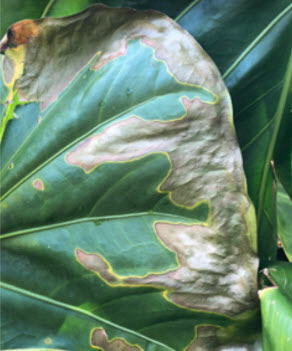Hot-Weather Gardening: How Plants and Gardeners Can Deal with Rising Temperatures

We’re accustomed to thinking of freezing temps as deadly to many plants, but extreme heat is just as dangerous. With temperatures rising around the globe, what can gardeners and plant lovers do to protect our plants from high heat?
Signs of heat stress include wilt, leaf margins that are brown and crisp, and dropping of flowers. Some basic steps you can take to protect your plants from heat stress include:
Proper Watering
Watering seems obvious, but only in early morning or early evening. Midday watering will result in much of the water evaporating before enough can penetrate to the plants’ roots, particularly if it needs to first penetrate a layer of mulch. Besides, who wants to stand outside under intense sun on a midsummer day holding a hose for an hour? Ideally, a soaker hose should be used to provide deep penetration of water over a longer period, rather than a quick spray from the hose. New plantings and those in pots may require more frequent watering.
Insulation—Mulch, Mulch, Mulch
It seems counterintuitive, like wearing a coat at the beach, but a layer of mulch can insulate and protect plant roots from high heat just as it does from cold. I use leaves that have accumulated in other parts of the yard. Store-bought mulch is fine, too, and can create a thicker layer.
Insulation also means your plants will need less watering, as the inches of mulch help block soil moisture from simply evaporating. But remember, intense summer rains may have already saturated the deeper soil level, and if you water based simply on the drier soil surface, you might create conditions for root rot.

Shade
In extreme heat, many plants will not flower or fruit. Smaller edibles like peppers, beans and the like are best grown in deep pots that you can move to avoid the worst of the sun. If they’re in-ground and not covering too much area, patio umbrellas can provide shade. Pre-made row covers are available, but in a pinch, you can use a light fabric sheet supported over the plants. It’s a tough balancing act, because much of what we grow for fruit and vegetables needs at least six hours of direct sun to thrive.
If you have the space, building a shade house is easier than you might anticipate as long as the top can support shade cloth or transparent plastics designed to reduce UV.
An interesting option for potted plants is the zeer pot. This ancient concept has been used for millennia to cool food. It’s simply a clay pot placed inside a larger clay pot with sand packed between them. The sand is soaked with water—as the water evaporates, it cools the inner pot.
It might work for plants, where a few degrees’ difference means a lot.
Heat-Tolerant Varieties
There are loads of plant varieties marketed as “heat tolerant,” but I don’t think they always have “South Florida” in mind. Look for heat-tolerant Caribbean edibles and ornamentals, as well as desert succulents, like “CAM” plants, provided they’re in well-draining- soil. CAM stands for crassulacean acid metabolism, a mouthful indeed but in short, CAM plants have adapted to very arid, hot conditions. Our wet weather doesn’t suit all of them.
Heat-lovers to plant include: Pentas, Liatris, Lantana, agaves, Aloe, cacti, some euphorbias and a host of native Florida plants like saw palmettos. Just take a look around the open, sandy areas of a pine rockland to find plants that shrug off high heat. Take advantage of midday shade provided by your home or other structures or trees. It might take a day to map out such locations, but it’s worth it to put the right plant in the right place.
This article was written by Kenneth Setzer and was originally published in the Fall 2018 issue of the Tropical Garden. Minor changes from the print version of this article were introduced to improve readability in a digital format.
